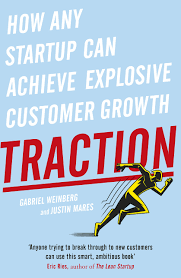Ramesh, a 38-year-old IT professional living in Pune, had a life that looked stable on the outside. He earned well, owned a modest flat, and provided for his wife and two children. But behind the curtain, his finances told another story.
Each month ended with him anxiously checking his balance, wondering: Where did all the money go? His savings were negligible, his insurance policies were products sold by persuasive agents that he barely understood, and investments—well, they didn’t exist.
One evening, while paying yet another EMI and worrying about school fees, Ramesh realized he was stuck in a cycle. He was working hard but not building any wealth.
The Turning Point: Discovering Let’s Talk Money
One Sunday afternoon at a bookstore in Pune, while browsing the personal finance section, Ramesh’s eyes fell on Monica Halan’s Let’s Talk Money. The subtitle—“You Control Your Money, or It Will Control You”—hit him like a lightning bolt.
He flipped through the first chapter and saw something simple yet profound: financial planning is not about chasing the highest returns but about structuring your money in a way that works for you.
That night, he decided to give the book a shot. It wasn’t just another self-help book. It was a blueprint for financial clarity.
Implementation Phase: Applying the Lessons Step by Step
As Ramesh read, he realized his financial mistakes weren’t unique—they were common among middle-class families in India. Here’s how he applied Monica Halan’s key concepts:
1. The Three-Account System
The book suggested dividing money into three bank accounts:
-
Income Account: All earnings flow here.
-
Spending Account: For daily expenses.
-
Investment Account: For long-term wealth building.
Ramesh implemented this immediately. His salary now went into the income account. From there, he transferred a fixed monthly amount into his spending account (groceries, bills, school fees) and a percentage into the investment account.
This simple shift brought him clarity. For the first time, he could see his money flow.
2. Getting Insurance Right
Earlier, Ramesh had been sold a mix of “money-back” and “endowment” policies by family friends. The premiums were high, but the returns were poor.
Through Let’s Talk Money, he realized insurance is protection, not investment. He canceled his unnecessary policies and bought a pure term life insurance plan worth ₹2 crore—ensuring his family’s security without draining his income.
He also purchased a medical insurance policy with proper coverage after checking settlement ratios, sub-limits, and waiting periods—no more relying on corporate health cover alone.
3. Building an Emergency Fund
Monica Halan emphasizes the importance of an emergency fund. Ramesh calculated his family’s monthly expenses and built a fund worth 12 months of expenses, parked in a mix of fixed deposits and liquid funds.
This gave him peace of mind—no more panic over unexpected car repairs or medical bills.
4. Investing Wisely
Instead of chasing stock tips or gold jewelry, Ramesh turned to mutual funds and index funds.
-
He started SIPs (Systematic Investment Plans) in large-cap mutual funds for stability.
-
Added an index fund tracking Nifty 50 for low-cost diversification.
-
Allocated some money to debt funds for security.
His new mantra became: Invest for the long term, not for quick wins.
5. Living by Thumb Rules
Ramesh followed Monica’s thumb rules of financial planning:
-
Living expenses ≤ 50% of take-home income
-
EMIs ≤ 25% of take-home income
-
Savings ≥ 20% of income
For the first time, his finances had structure, clarity, and discipline.
The Breakthrough: Crossing the Financial Clarity Point
Six months later, something magical happened.
Ramesh sat down to check his accounts. His emergency fund was intact, his investments had started growing, and his expenses were under control. For the first time in his life, he wasn’t living paycheck to paycheck.
The moment came when his daughter’s school announced a hefty annual fee hike. In the past, this would have sent him into panic mode. This time, he calmly withdrew from his spending account and adjusted the budget. No anxiety. No sleepless nights.
That was his financial clarity point—the realization that money was no longer controlling him; he was controlling money.
Life After Change: A New Chapter in Pune
Ramesh’s life transformed in ways he hadn’t imagined:
-
He no longer feared monthly expenses or unexpected emergencies.
-
His family had financial security with proper term and medical insurance.
-
His SIPs were steadily growing, creating a path to financial freedom.
-
He had conversations about money with his children, teaching them financial habits early.
The constant background stress about money was gone. In its place was confidence, calm, and freedom to dream bigger.
Reflection: Ramesh’s Advice for Others
In Ramesh’s words:
“I thought financial planning was only for the rich. But Monica Halan’s Let’s Talk Money showed me that clarity and discipline are the real wealth. If you can control your expenses, build safety nets, and invest regularly, financial freedom isn’t a dream—it’s a system.”
Action Plan for Readers
Here’s how you can start applying Monica Halan’s principles today:
-
Open three bank accounts – income, spending, and investments.
-
Review your insurance policies – keep only term life and proper health insurance.
-
Build an emergency fund of 6–12 months of expenses.
-
Follow thumb rules – limit expenses and EMIs, save 15–20%.
-
Start SIPs in mutual funds/index funds for wealth creation.
Call to Action
Inspired by Ramesh’s journey? This is just one story in our Book to Life series. Pick up Monica Halan’s Let’s Talk Money today and take the first step toward your own financial freedom.
💡 Ready to transform your financial life? Start your journey now—because money should give you choices, not stress.
Disclaimer
This story is hypothetical and created only to illustrate how the concepts from Let’s Talk Money by Monica Halan can be applied in real life through storytelling.




